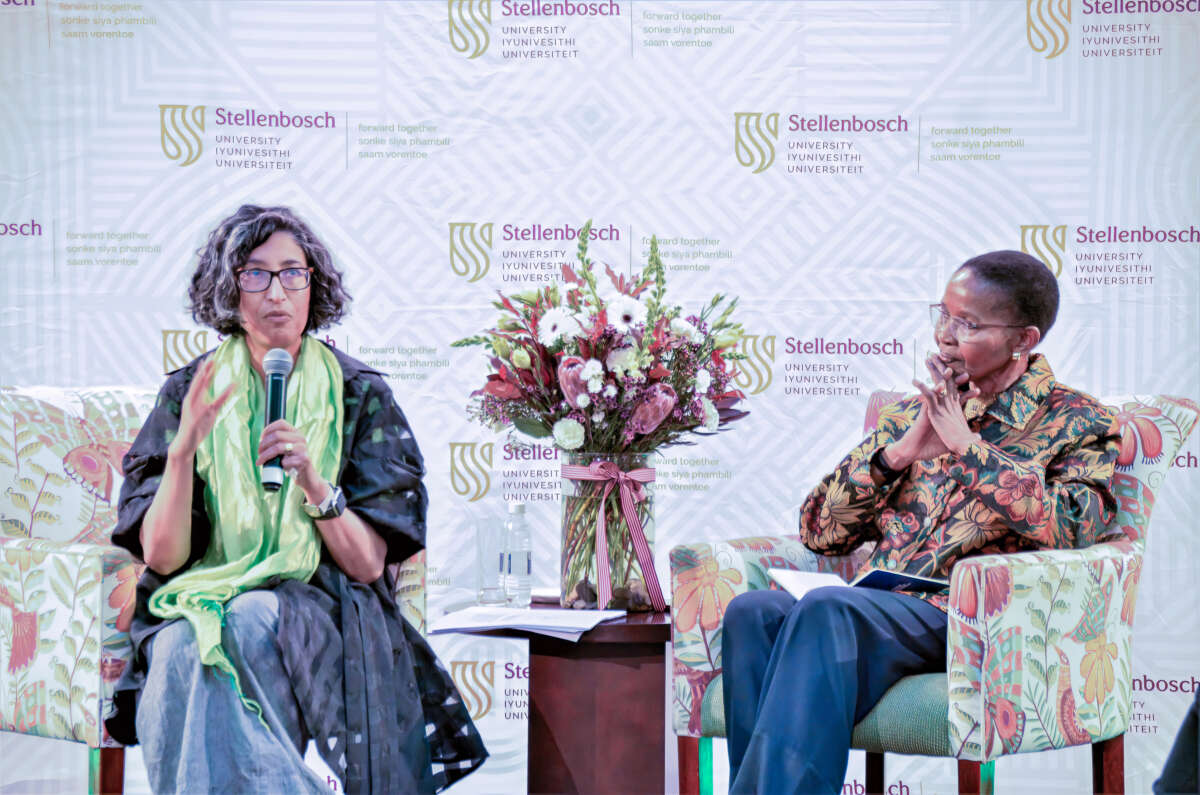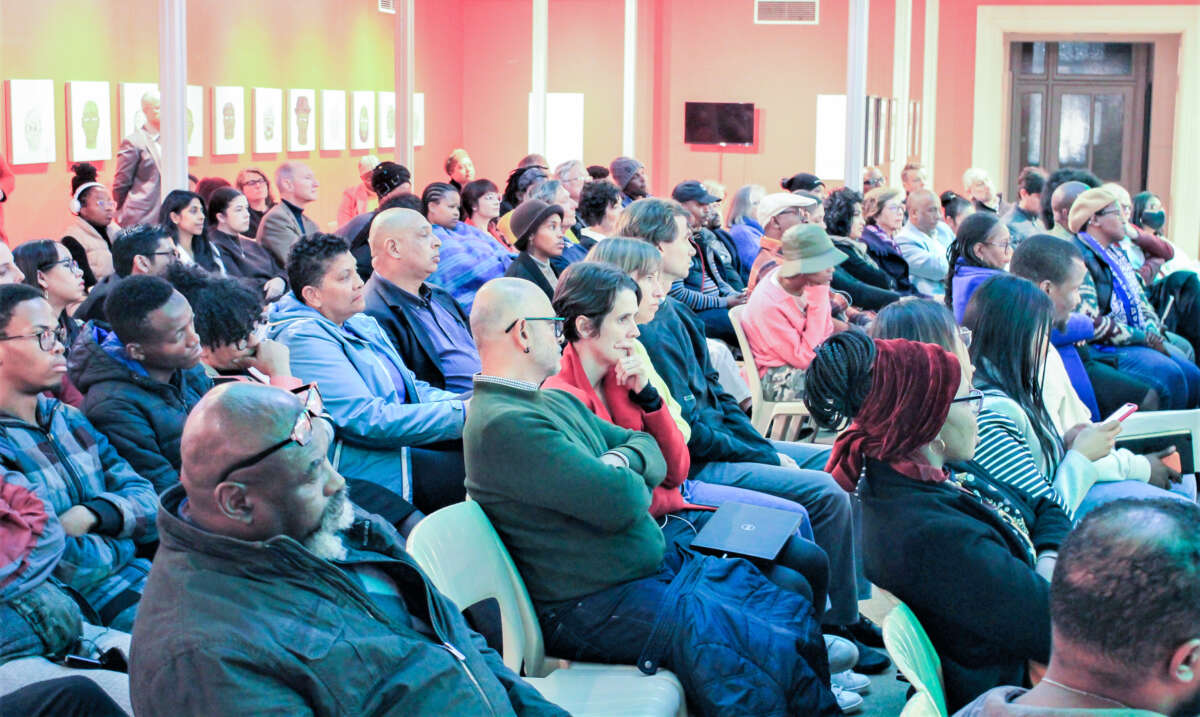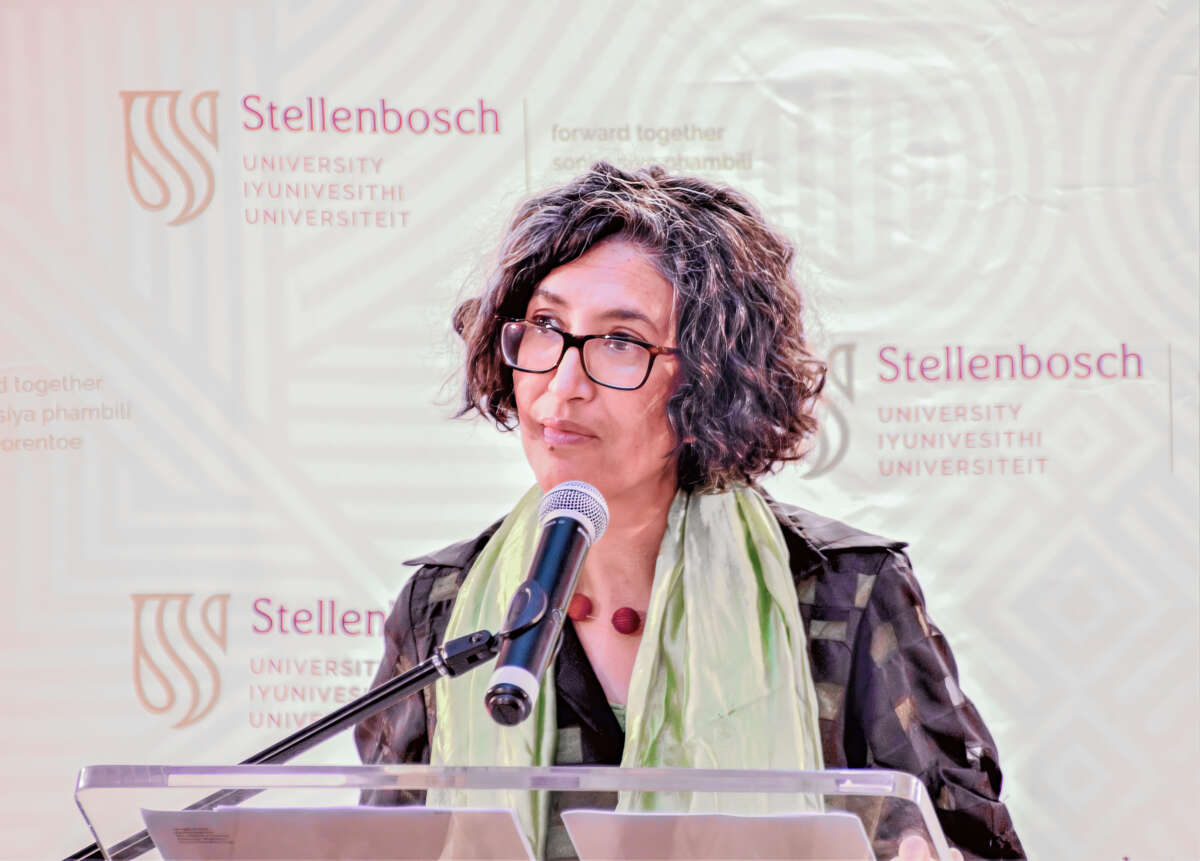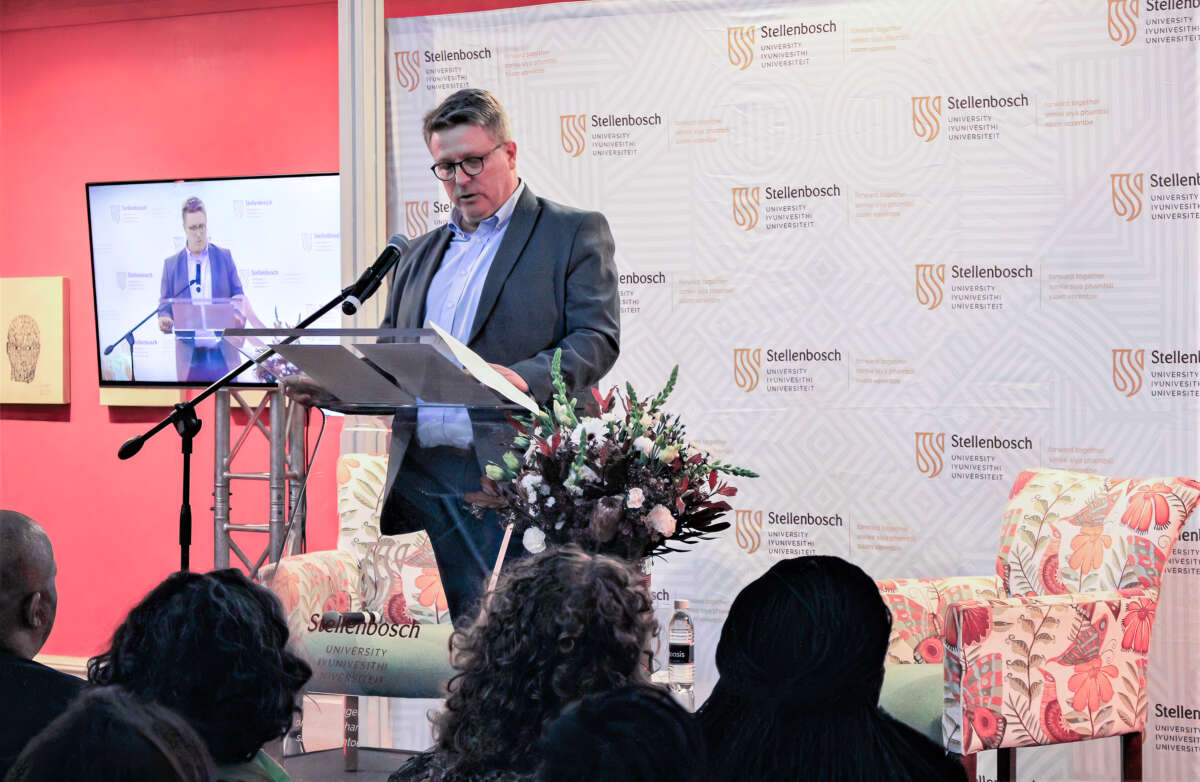“We need to claim the space of the university because it is a collective treasure to us all. The university itself becomes enriched when it recognises all who belong. It diminishes and impoverishes itself when it lives along the lines of exclusion that it inherited.”
This was one of the profound insights Prof Gabeda Baderoon shared with the audience in the packed hall of the Stellenbosch Museum as she delivered the 5th Annual Africa Day Lecture on Monday 22 May.
This annual lecture is hosted by the Rector and Vice-Chancellor of Stellenbosch University (SU), Prof Wim de Villiers and is coordinated by the Centre for the Study of the Afterlife of Violence and Reparative Quest (AVReQ) and the Centre for Collaboration in Africa.
Baderoon’s address was titled “The University and its Hinterlands: A Relief Map” and she drew on memories, history, and critique to reflect on academia and its meaning in the post-apartheid era. She enthralled the audience by reciting two very personal poems to contextualise her exploration of the historical distances and fraught intimacies of the academic landscape in South Africa.
An acclaimed poet and scholar, Baderoon is an extraordinary professor of English at SU, a fellow at the Stellenbosch Institute for Advanced Study and currently the Sarah Baartman senior fellow at the University of Cape Town (UCT). She is the author of three poetry collections and of the ground-breaking book Regarding Muslims: From Slavery to Post-Apartheid.
Baderoon also co-directs the African Feminist Initiative at Penn State University in America, where she is an associate professor of women’s, gender and sexuality studies, African studies and comparative literature.
Hinterlands
“The greatest treasure of the university is the living part of it, the intangible part. That is what I want to speak about when I think about the university and its hinterlands,” Baderoon said. She dedicated the lecture to her mother, about whom she is writing an autobiography.
“In the early days of apartheid, my mother attended UCT as a medical student, as the first person in her family to go to university, as the youngest daughter in a Muslim working-class family to go to university and to study medicine. My mother embodies the idea of a living treasure. I call on us all to think about our intellectual autobiographies. All of us here in this room – students; those who teach and work at universities; and graduates of universities. How did we get here? How did we get through? And what do we do with a gift that we receive from a place like this?”
Exploring our collective intellectual autobiographies will allow us to craft a university for our current post-traumatic time, Baderoon argued.
She juxtaposed her own experience at UCT in the late 1980s with her mother’s experience. As a student she experienced many moments of anger, resentment, and resistance, she said.
The person who changed the course of her career was an administrator at UCT from the postgraduate scholarship office, Vuyani Manele. In 1998 he came and knocked on all the doors of postgraduate students in the arts block on campus, particularly the black students to invite us to apply for fellowships at prestigious institutions.
The act of one administrator who made an effort to reach out to black students had a profound impact on her life, Baderoon said. Honouring the individual to whom she owes so much of her education is an acknowledgment that access to the academic hinterland is brokered by bridge-builders who go above and beyond their duties.
Baderoon unpacked the layered meaning of the word “hinterland” to indicate a place that oscillates, a place that can be both distant and intimate. “If you think about it, every place has a hinterland, but it also is a hinterland of somewhere else. So, in a way, a hinterland asks where do you belong? And where is your elsewhere? Where is the place that is close to you, and where is the place you feel is distant from you?”
She challenged the audience to think of what would be considered as SU’s hinterland. “Could it be the farmland surrounding it? Could it be Idas Valley? Could it be Kayamandi…?”
African intellectual
Baderoon shared a moving memory about being on a train shortly after railway apartheid ended. “I was the only black person in the carriage. I sat in a very deliberate way. I wanted to put my body in a place where it didn’t seem to belong. While I was sitting there, I overheard a conversation in which a man said to a woman: ‘They have no history. They have no literature.’ The conversation went on in this way, and I was absolutely furious. I had no words with which to counter what he was saying. I didn’t know how to answer back. And so I took that fury into classes on African literature and African history so that I would always be prepared. It was a turning point in my intellectual development.”
Baderoon credits two groupings with her intellectual liberation: feminist lecturers at UCT and the Women of Colour Consciousness Raising (WCCR), a student-created support group of young black women who were postgraduate students at all the universities in the Western Cape in the 1990s.
“We pooled our energies and created a space in which something visionary could happen. What we did was to read one another’s work to support the radical ideas that didn’t have a home in the official parts of the university. We also took our bodies into spaces that didn’t recognise African intellectual excellence in the form that we represented.
“We created the first Africanist, womanist conference on the continent in 1998. We institutionalised ourselves because the transformative energies of such a group need to become visible not only to its members. Part of what you do as a living part of an institution is to create nodes of visionary practices, ways of incubating ideas that don’t yet have a home in the official corridors of the university.”
Another turning point was discovering a talent for poetry, Baderoon said. While trying to find a distraction from academic work and a “hunger for which (she) didn’t have words”, she joined a poetry writing class. This allowed her to experience the “incredible liberation” of being a complete beginner in a new discipline while completing her PhD.
Baderoon concluded the lecture with her poem “The History of Intimacy”, which ends with a poignant verse:
In 1988 at Crawford train station, my brother and I find a blue
plank hand-painted in yellow letters:
“Non-Whites Only” on one side
“Whites Only” on the other
thrown away by the fence next to the tracks.
Picking it up, we see the two sides
of the sign lay back to back,
each half resting against its opposite,
intimate and inverse
but unknown to each other.
We knew this was history
someone had made by hand then hidden
and tried to forget. We bring it home
and come across it sometimes in a corner
when we’re looking for something else.
At the end of Baderoon’s lecture, two SU professors made remarks that brought her central message into dialogue with the vital role the University can play as a site of change and transformation of knowledge.
Professor Pumla Gobodo-Madikizela, Director of AVReQ, compared the question Baderoon posed with her story from her train ride in a previously white carriage to life at SU. She suggested the story challenges black students and staff “to reclaim their right” to be at SU, a place in which they are seen by some as “not supposed to belong.”
Prof Kopano Ratele (Department of Psychology) asked what it would take to establish a black feminist collective at SU such as the WCCR that nurtured Baderoon in her time as a graduate student. She replied that such a formation is a vital necessity. “The collective is the answer. I would love to imagine a black feminist coalition at Stellenbosch. What does that look like? Let’s answer the question together.”












